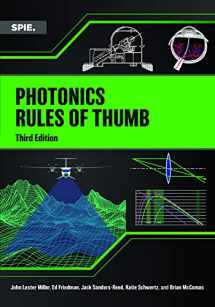
Photonics Rules of Thumb
Book details
Summary
Description
Updated and expanded, the third edition of Photonics Rules of Thumb represents an evolving, idiosyncratic, and eclectic toolbox intended to allow any engineer, scientist, manager, marketeer, or technician (regardless of specialty) to make rapid and accurate guesses at solutions in a wide range of topics during system design, modeling, or fabrication. This book will help any electro-optics team to make quick assessments, generally requiring no more than a calculator, so that they can quickly find the right solution for a design problem.
This book has been assembled to introduce anyone working in the optics and photonics community to a wide range of critical topics through simple calculations, graphics, equations, and explanations. Useful design principles and rules, simple-to-implement calculations, and numerous graphs and tables of important basic information allow you to rapidly pinpoint trouble spots, ask the right questions at meetings, and are perfect for quick checks of last-minute specifications or performance feature additions. Offering a convenient arrangement according to specialty, this unique reference spans the spectrum of photonics. Eighteen chapters cover optics, atmospherics, radiometry, focal plane arrays, degraded visual environments, economics, and photogrammetry, as well as technologies related to security and surveillance systems, infrared, lasers, electro-optics, phenomenologies, self-driving vehicles, and many others.


We would LOVE it if you could help us and other readers by reviewing the book
Book review



